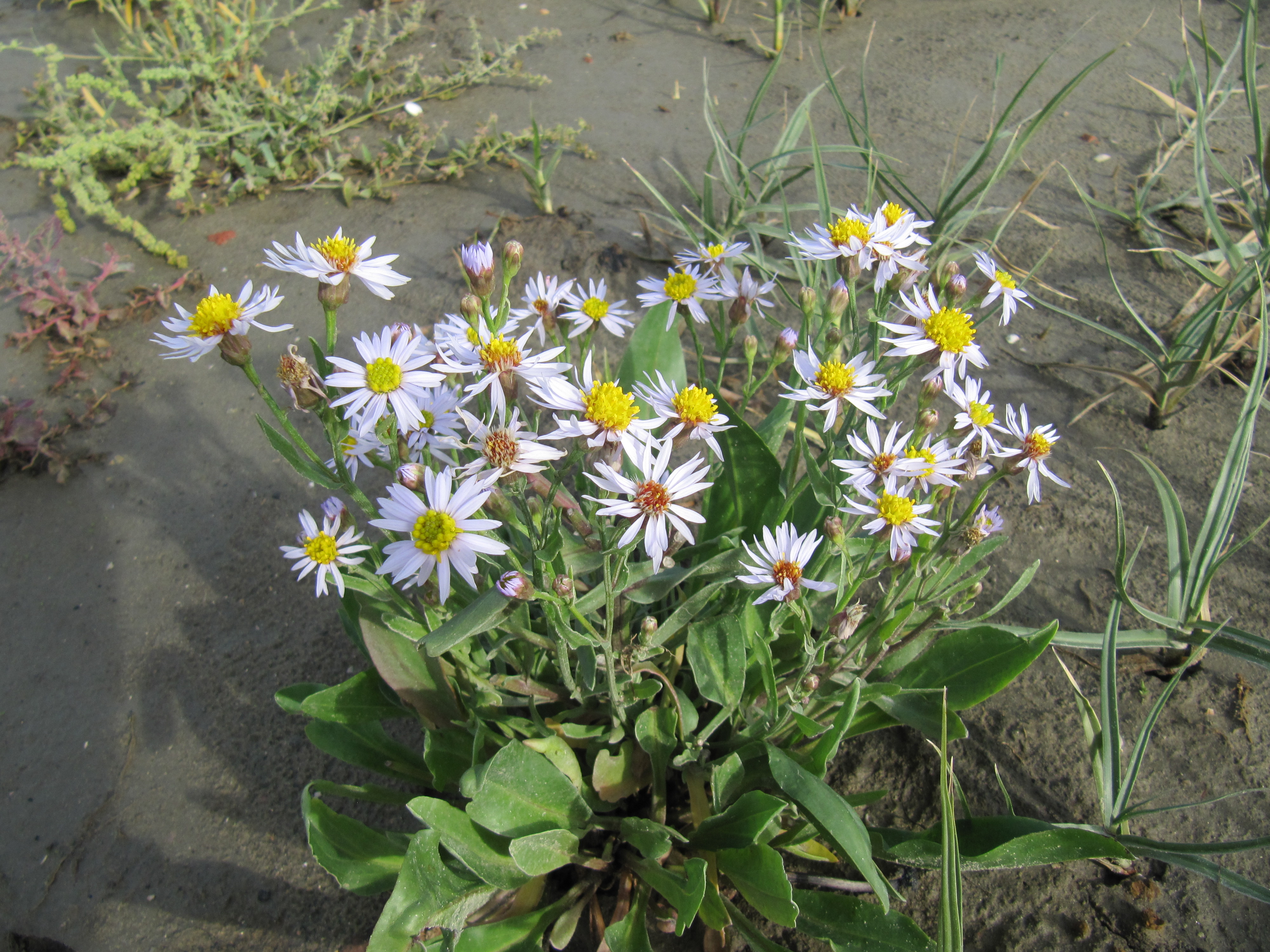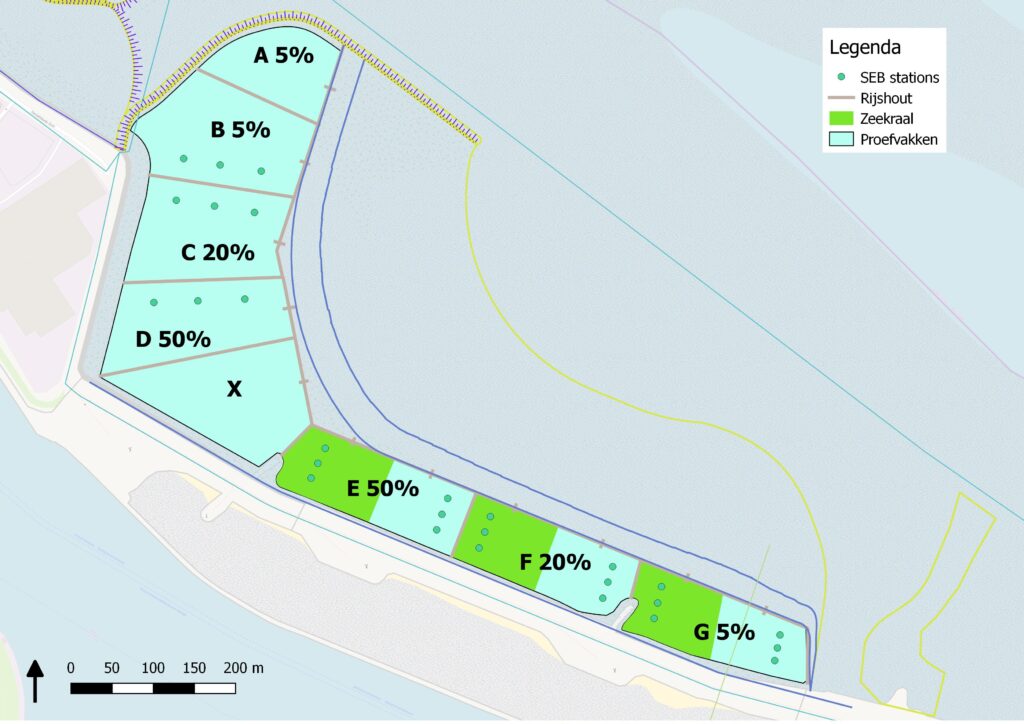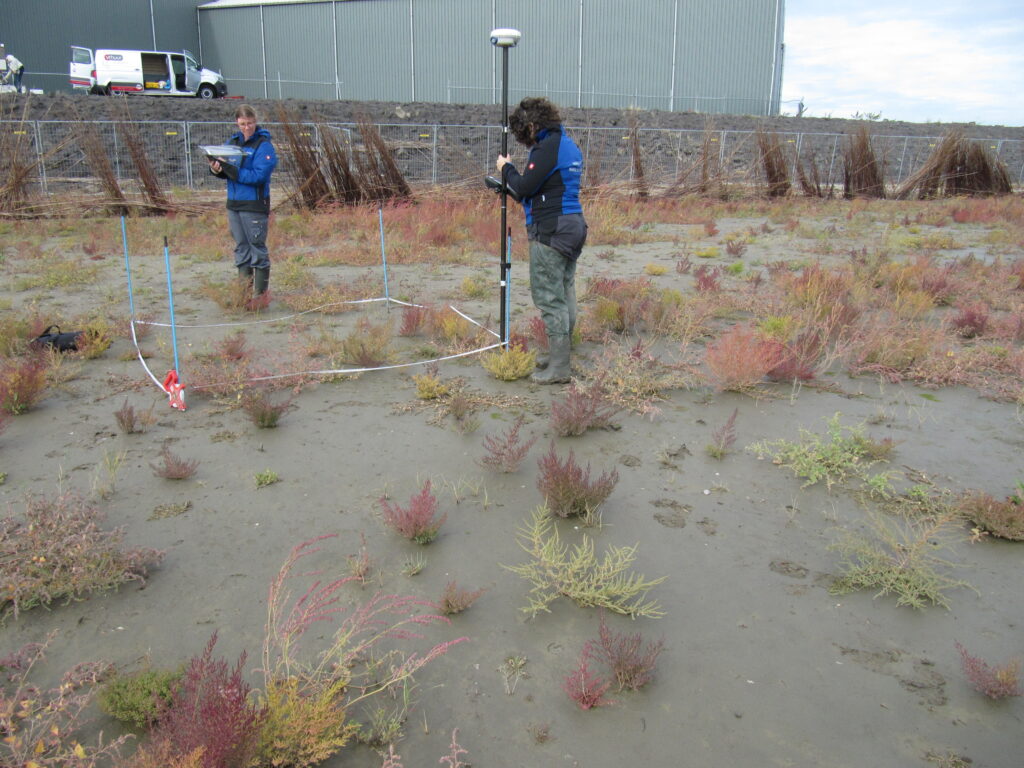The team working on the salt marsh trial near Delfzijl (Marconi) completed the first monitoring campaign in September. EcoShape researcher Marinka van Puijenbroek reports.
Marinka: ‘We measured sedimentation and erosion, vegetation cover and cover with green algae (diatoms and cyanobacteria). Vegetation and algae make the soil more stable, capture the sediment and, in that way, prevent erosion. We also measured elevation with a LIDAR drone.’
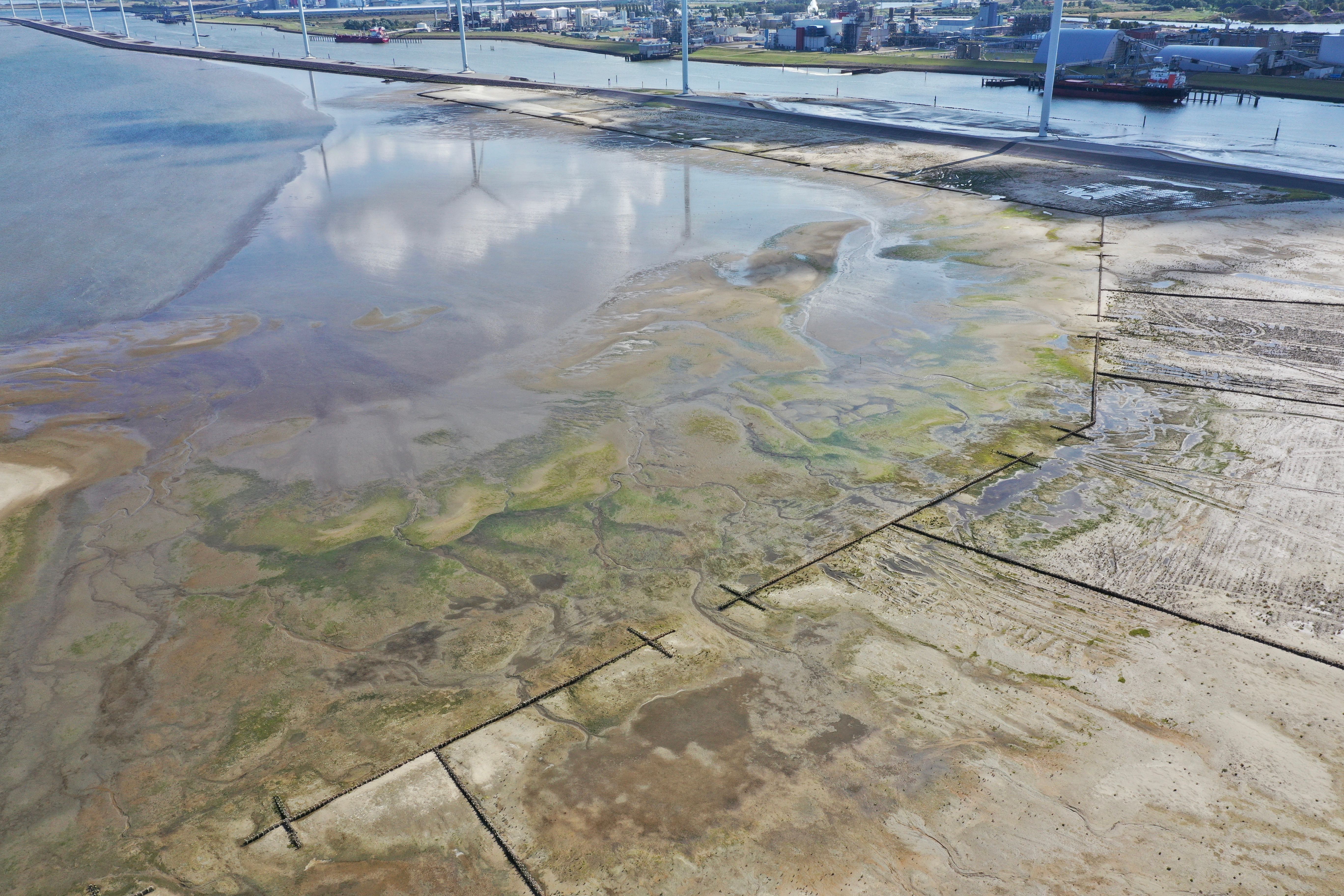
‘There is now a lot of vegetation in the areas where clay has been mixed with the sand. In the sandiest areas with only 5% clay, hardly anything has grown, while many different plant species have already colonised the areas with a higher clay percentage.
In May, we sowed salicornia procumbens (glasswort) in parts of the salt marsh and it has come up nicely everywhere, including areas with little clay (5%). So the contrast with the areas where seeds were not sown is very striking indeed.
There was also a lot of algae cover. In the areas with a lot of clay, the algae provide more cover, capturing the soil and preventing erosion.’
‘There are different species of glasswort. The most important are salicornia procumbens and salicornia europaea. We sowed the seeds for the first but not the second. Both are doing well, although the sown glasswort appears to be doing best in lower and wetter sections.’
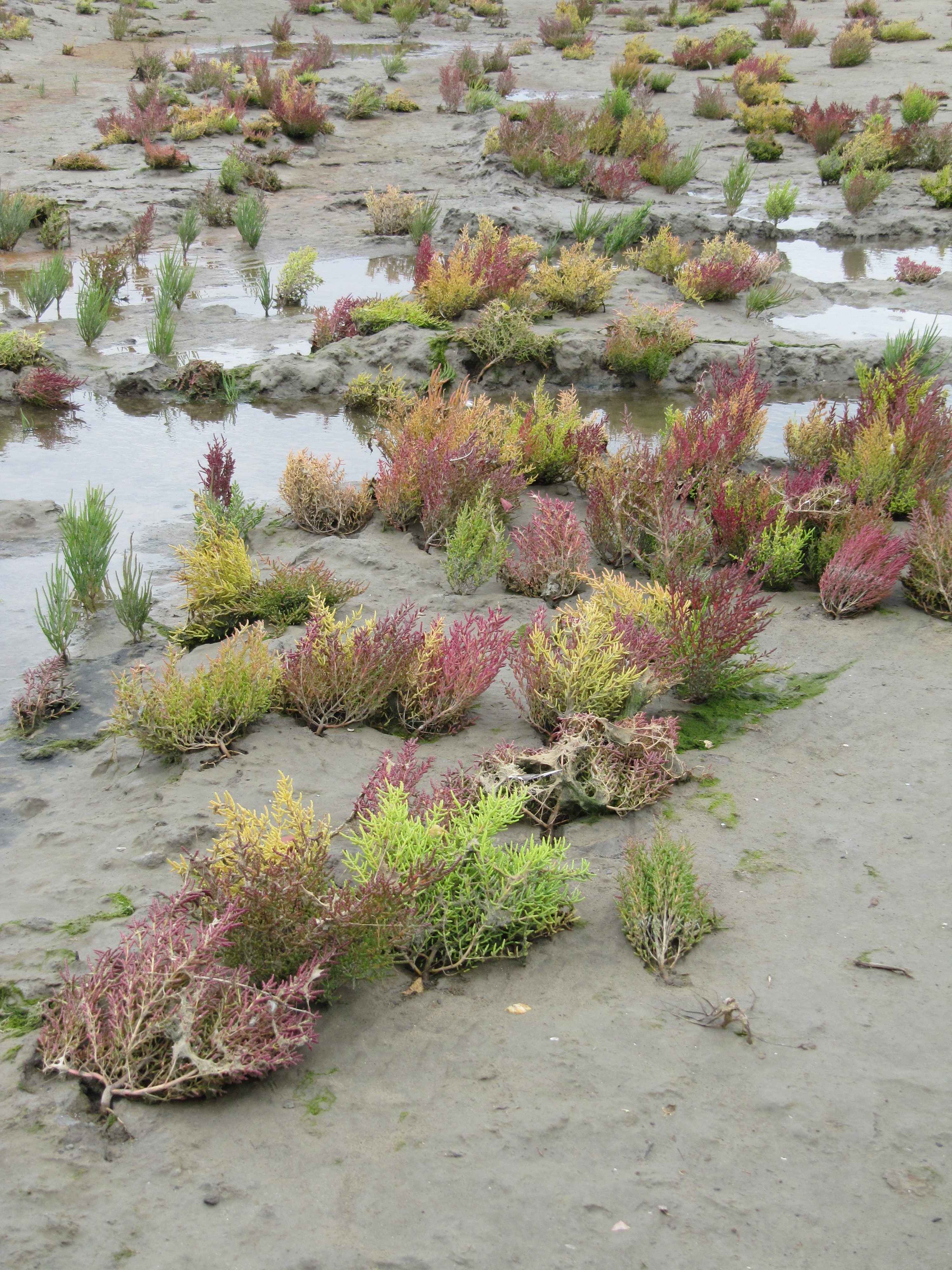
The green plants are the sown glasswort (salicornia procumbens); the salicornia europaea, which grew spontaneously, turns red/yellow.
‘In addition, there are also various plant species that are normally seen only later in the development of a salt marsh, such as flowering sea aster (see photo). This indicates that the vegetation on the salt marsh is likely to develop rapidly.
We are now investigating the ‘seed bank’ in the salt marsh itself by taking samples at a depth of 20 cm and comparing them with new seeds in the top layer that were washed ashore last year. Those data are now being analysed by a student.’
The next monitoring campaign will be in November. The team will continue monitoring until September of next year.
